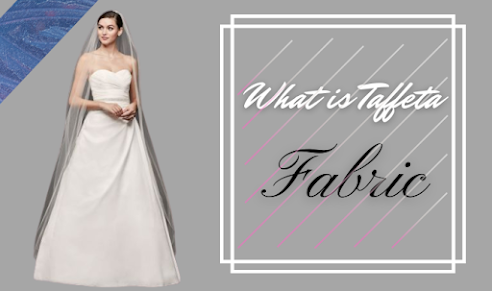HOW DO YOU MAKE TAFFETA?
WHAT IS TAFFETA AND WHAT DOES IT DO?
There are a few things about taffeta that set it apart from other fabrics. Among them are:• Shine: This expensive fabric has a special shine that makes it stand out. Most of the shine comes from silk and polyester.
• Smooth: The taffeta fabric feels very smooth when you touch it. This is especially true for taffeta which has been dyed in pieces.
• Crisp. This is another thing that makes taffeta fabric stand out. The crispness comes from making a plain weave with tightly twisted yarns.
WHAT DO YOU DO WITH TAFFETA?
Taffeta is most often seen on red carpets, but it is also used to decorate homes and make costumes. Here's how you can use this fabric:EVENING GOWNS
It's no surprise that taffeta is used
to make evening gowns because it is shiny, crisp, and expensive. The fabric is
known for being of high quality, which makes it perfect for making stylish
clothes. It's also used a lot to make wedding dresses, prom dresses, and other
costumes for parties.
LININGS
Piece-dyed fabric is a type of silk taffeta that has a very soft and decorative texture. Because of this, it is mostly used to make jacket linings.
CURTAINS
Curtains and other home decor can be made from taffeta fabric that is stiff. When pulled together, a taffeta curtain can add to the beauty of any room because it keeps its shape. This makes it a great choice if you want window curtains that flow.
CORSETS
The Stiffer taffeta fabric is also used to make underwear-like corsets. Because it is stiff, it can hold its shape in the waistline for that silhouette effect.
BENEFITS OF TAFFETA FABRIC
Do
You Know About Taffeta Fabric and
why it has such a good name in the clothing business? Here are some of the
reasons:
• Luxurious: The taffeta fabric
is shiny, crisp, and of good quality. Because of this, it is seen as an
expensive fabric that can be used to make beautiful, expensive costumes.
• Pliable. This is another reason why designers
love to work with this fabric. Its stiffness gives it more volume and helps it
keep its shape over time.
• Pill-Resistant: Taffeta fabric can keep its smooth
surface without getting fuzzy.

Comments
Post a Comment